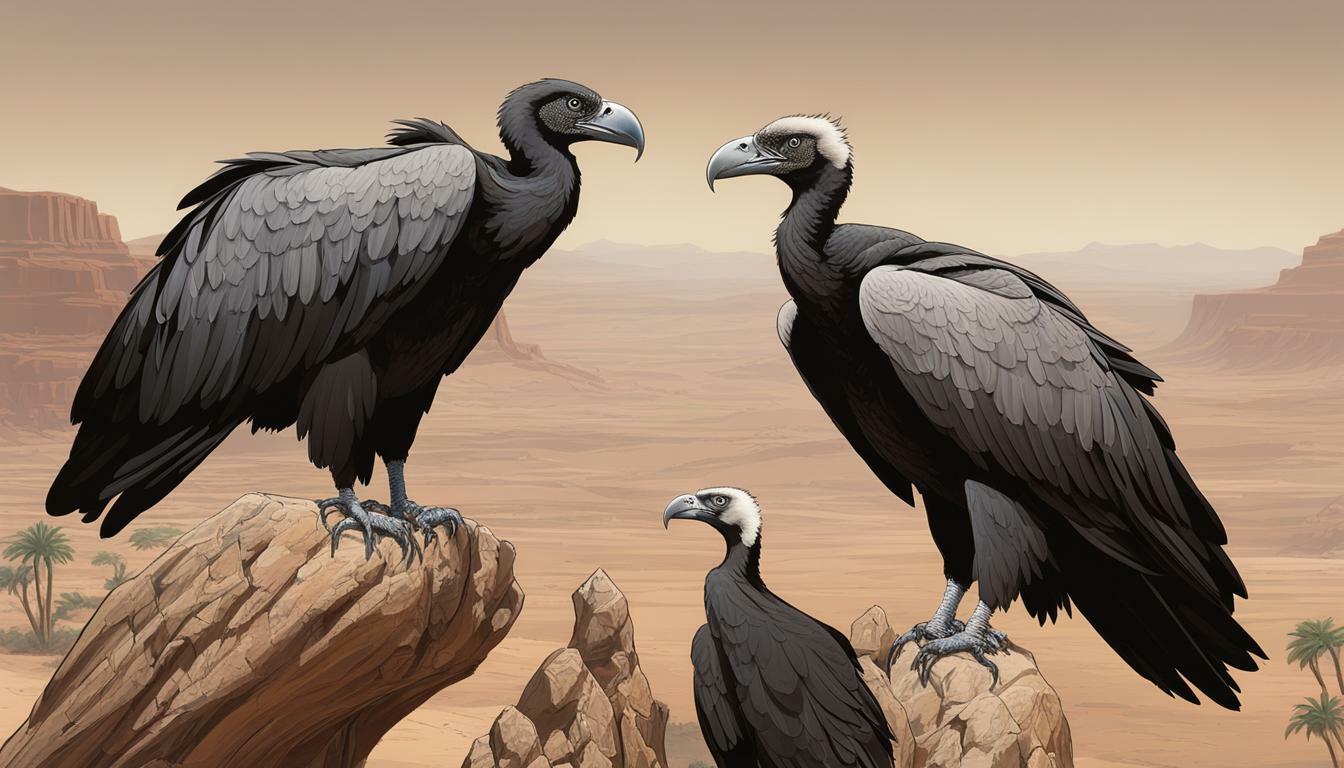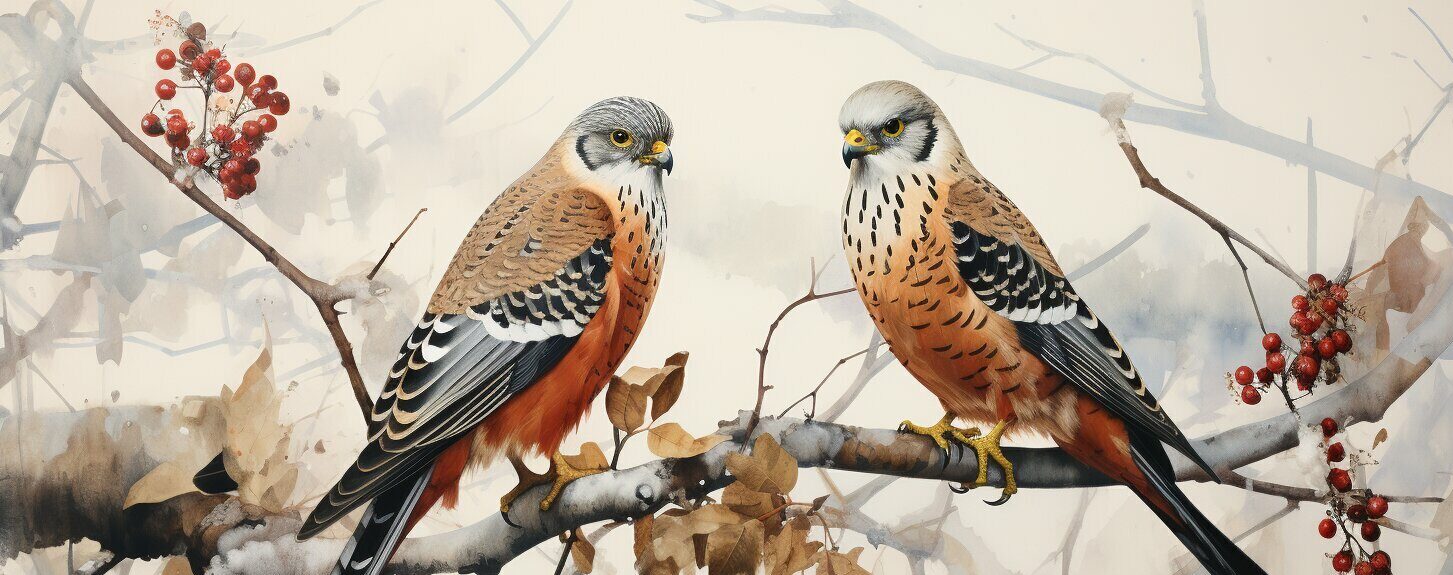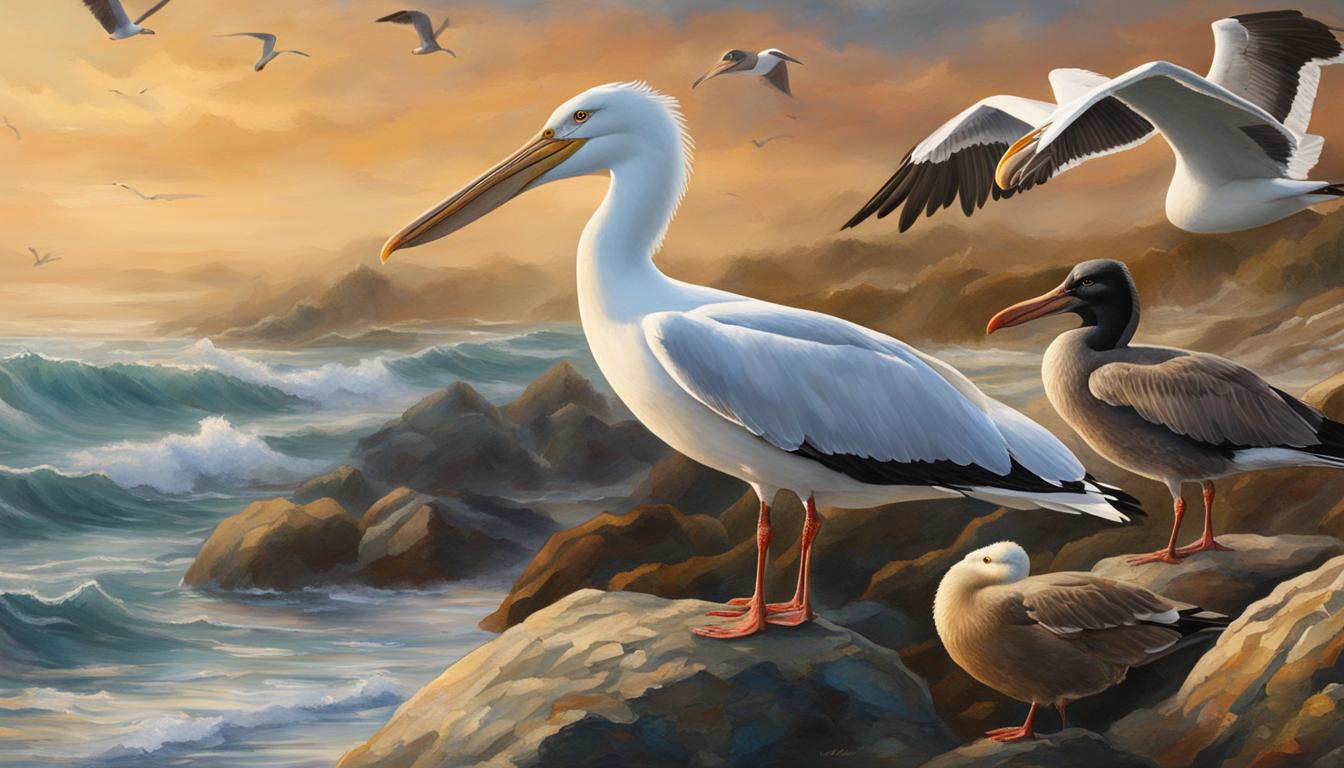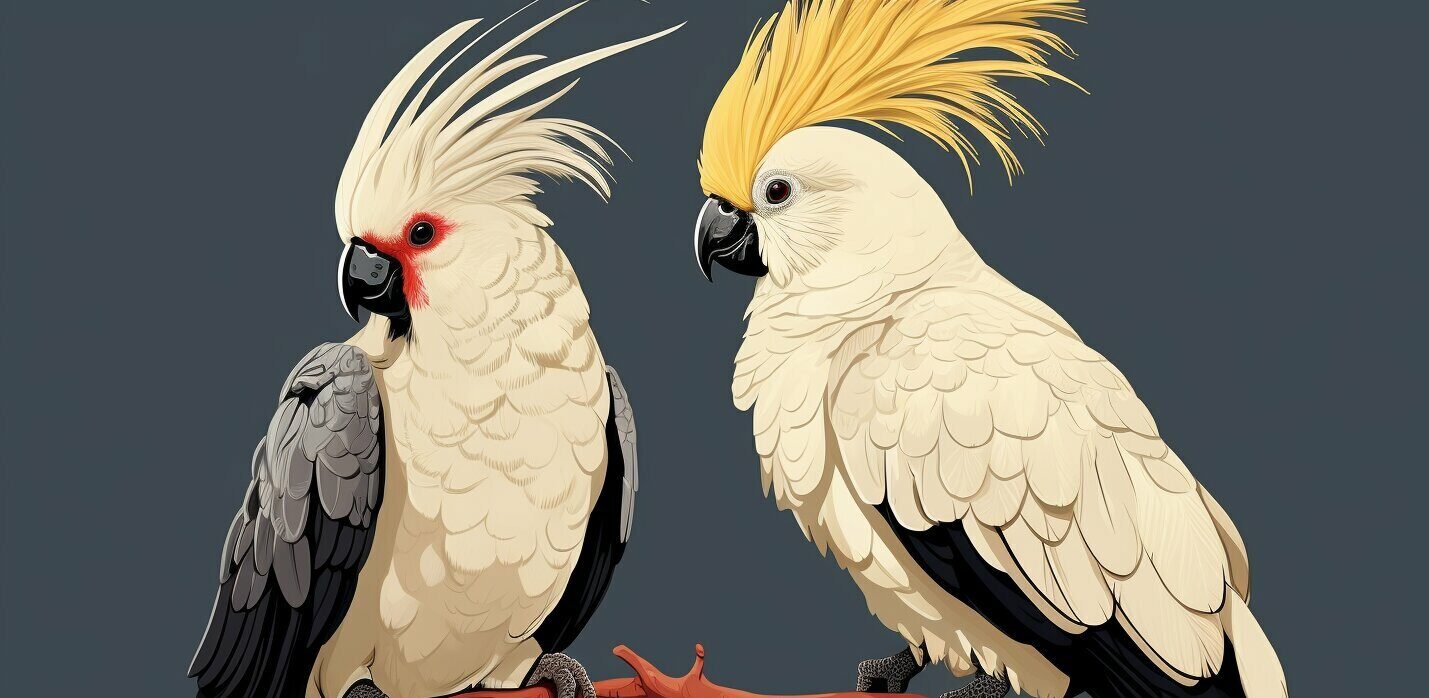When it comes to birds of prey, vultures and condors are often misidentified or used interchangeably. However, these two avian species have their unique characteristics, behavior, and ecological roles. In this article, we will explore the main differences between vultures and condors, shedding light on their physical attributes, behavior, diet, habitat, and conservation status.
Key Takeaways:
- Vultures and condors have distinct physical characteristics, behaviors, and ecological roles.
- Understanding the differences between vultures and condors is crucial for their preservation and conservation.
- Vultures and condors play a critical role in the ecosystem as scavengers, contributing to the maintenance of ecological balance.
Vulture vs. Condor: Size and Identification
Vultures and condors may appear similar at first glance, but there are several differences between the two birds. One of the most noticeable differences is their size.
Vultures tend to be smaller than condors, with some species only growing to be a few feet tall. On the other hand, condors are some of the largest flying birds in the world, with wingspans that can reach over 10 feet!
Another way to differentiate vultures from condors is by their appearance. Vultures are often dark in color, with bald heads and long, curved bills. In contrast, condors typically have lighter feathers and a distinct ruff of feathers around their necks.
Vulture and Condor Identification
Identifying vultures and condors can be challenging, but there are a few key features to look for. Vultures are generally shorter and more compact than condors, and their wings tend to be broader. They also have a sharper, more hooked beak than condors.
Condors, on the other hand, are much larger and have a more distinctive appearance. Their neck ruff and lighter feathers make them easy to spot in flight. Additionally, their wings tend to be narrower and more pointed than vultures.
Vultures vs. Condors Size
When it comes to size, vultures and condors are in two different categories. Vultures are generally much smaller than condors, with the largest vulture species (the Andean Condor) having a wingspan of around 10 feet. Some vulture species, such as the turkey vulture, have wingspans of around 6 feet and can weigh up to 5 pounds.
In contrast, condors are much larger. The California Condor, for example, has a wingspan of up to 10.5 feet and can weigh over 20 pounds. Andean Condors, found in the Andes mountains, can weigh up to 33 pounds and have a wingspan of over 11 feet.
Overall, while both vultures and condors are impressive birds, they can easily be distinguished by their size and appearance. Understanding these differences can help birdwatchers and wildlife enthusiasts identify these majestic creatures in the wild.
Vulture and Condor Behavior: Habits and Behaviors
Vultures and condors, despite being closely related, exhibit distinct behavioral differences. These differences stem from their dissimilar feeding habits, social behavior, and nesting preferences.
Vulture Behavior
Vultures are opportunistic scavengers, feeding solely on carrion. They are predominantly loners, but can be found in groups when food is abundant. They soar high in the sky, using their acute sense of smell to locate carcasses. Once a carcass is found, vultures gather around it and feed communally.
Vultures are also known to be highly social when it comes to courtship and mating. They perform elaborate courtship displays, which can involve soaring together in the air and engaging in physical contact. Once a pair is formed, they build their nests on cliffs, in trees, or on the ground. Both parents participate in incubating the eggs and raising the chicks.
Condor Behavior
Condors, on the other hand, hunt larger prey, such as deer, and supplement their diet with carrion. They are also social animals and are often seen flying in groups of up to several dozen individuals. During feeding, they prefer to maintain a distance from one another and tend to feed alone or in small groups.
Condors prefer to nest in caves or rock crevices that are inaccessible to predators. They lay a single egg that is incubated by both parents. The chicks are dependent on their parents for up to a year.
While both vultures and condors are scavengers, the differences in their behavior and feeding habits reflect their unique adaptations to their environments.
Vulture and Condor Diet: What They Eat
Vultures and condors are known for their scavenging behavior, feeding mainly on carrion. However, their feeding preferences and habits differ based on their ecological roles and geographical locations.
Vultures have a varied diet, feeding on carcasses of mammals, birds, and reptiles. They are also known to consume fish and invertebrates. Vultures have a strong digestive system that allows them to feed on rotting flesh that may carry harmful bacteria.
Condors, on the other hand, have a more limited diet, primarily feeding on the carcasses of large mammals, such as deer and cattle. They use their keen eyesight to spot carrion from great distances and rely on their impressive wingspan and soaring ability to reach their food sources.
In addition to their role as scavengers, vultures and condors play a critical role in maintaining the balance of ecosystems. They help to prevent the spread of disease by consuming carcasses that could otherwise become breeding grounds for harmful bacteria and pathogens.
As apex scavengers, vultures and condors also provide food and resources for other species, such as insects and small mammals, that may not be able to access carrion on their own.
However, these birds are facing significant threats, such as habitat loss, poisoning, and hunting, which have caused declines in their populations. It is essential to protect and conserve these remarkable birds to ensure their continued contribution to the balance of ecosystems.
Vulture and Condor Habitat and Distribution
Vultures and condors are found in a variety of habitats across different regions of the world. These birds have unique ecological niches and can be found in different habitats ranging from forests and grasslands to mountains and deserts.
In North and South America, the Andean condor is found along the coasts of the Pacific Ocean and the high Andes Mountains. On the other hand, the turkey vulture is commonly found in open country, deserts, and in the tropics of Central and South America.
The African vulture species, such as the lappet-faced and the white-backed vultures, inhabit savannas, open woodlands, and deserts. Meanwhile, the Himalayan griffon vulture is found in the Himalayan mountain range, while the cinereous vulture is found in the mountains of southern Europe and Asia.
Overall, vultures and condors prefer to inhabit areas where they can find a steady supply of carrion, their primary food source. They also require suitable nesting and roosting sites, which can vary depending on the species and the region they inhabit.
Vulture and Condor Distribution
The distribution of vultures and condors also varies depending on the species and the region. For instance, the California condor is found primarily in the western United States, while the king vulture is found in Central and South America.
Many vulture populations around the world are declining, with some species facing the threat of extinction. Habitat loss, persecution, poaching, and poisoning are among the primary threats faced by these birds.
As such, conservation efforts are underway to protect vultures and condors and their habitats. These efforts are critical for ensuring the long-term survival of these birds and maintaining the vital role they play in the ecosystem as scavengers and cleaners.
Vulture and Condor Conservation Status
The conservation status of vultures and condors is a matter of great concern. Numerous species of vultures and condors worldwide are facing threats due to habitat loss, hunting, poisoning, and collision with power lines. These birds play an essential role in the ecosystem as scavengers, helping to keep the environment clean and free of disease. However, they are often misunderstood and persecuted, leading to significant population declines.
The IUCN Red List classifies most vulture and condor species as threatened, with some species already critically endangered. For instance, the California Condor, a species native to western North America, was on the brink of extinction in the 1980s, with only 27 individuals remaining in the wild. Thanks to successful conservation efforts, the population has increased to over 400 birds, but the species remains critically endangered.
Conservation efforts for vultures and condors include habitat protection, captive breeding programs, and reintroduction initiatives. Organizations such as the Vulture Conservation Foundation and the Condor Recovery Program work tirelessly to monitor populations, reduce threats, and raise awareness about the importance of these birds in the ecosystem.
It is crucial to conserve vultures and condors for the sake of biodiversity and ecological balance. Without these birds, the environment would be overrun with decaying carcasses, leading to the spread of diseases and an increase in vermin populations. Additionally, vultures and condors have cultural and spiritual significance for many indigenous communities and are an essential part of local economies through ecotourism.
More needs to be done to protect these magnificent birds. Governments, NGOs, and individuals all have a role to play in safeguarding their future. By supporting conservation efforts, we can ensure that future generations will have the opportunity to appreciate the beauty and ecological significance of vultures and condors.
Conclusion
After examining the differences between vultures and condors, it becomes clear that these birds have unique physical and behavioral characteristics as well as distinct ecological roles.
Vultures are generally smaller in size than condors and have bare heads and necks, while condors have feathered heads and necks. Vultures are also more social and flock in larger groups, while condors tend to be solitary or found in smaller groups.
Despite these differences, both vultures and condors play a vital role in the ecosystem as scavengers, feeding on carrion and helping to keep our environment clean. However, these magnificent birds face numerous threats, including habitat loss, poisoning, and illegal hunting.
Preserving Our Ecosystem
It is essential that we work to conserve and protect vultures and condors, not only for their intrinsic value but also for the important role they play in our environment. Conservation efforts include habitat protection, research, and education initiatives to raise awareness of the importance of these birds and their conservation needs.
Ultimately, by understanding and conserving vultures and condors, we can help preserve our ecosystem, maintain ecological balance, and ensure a healthy planet for generations to come.



